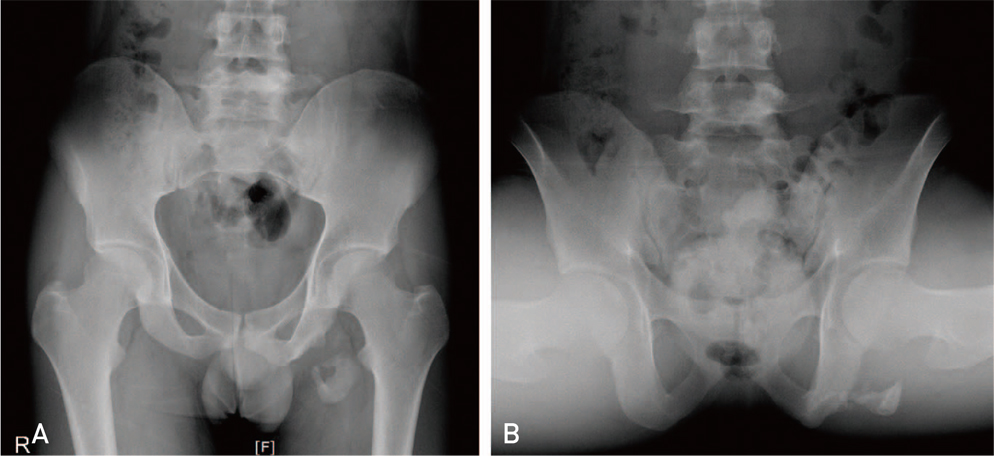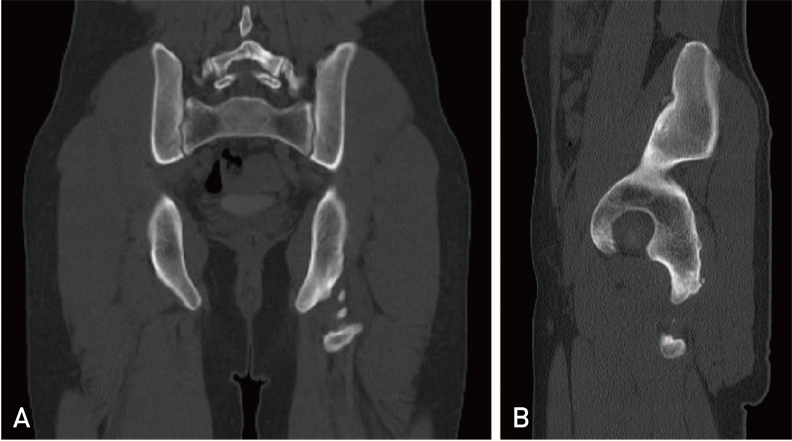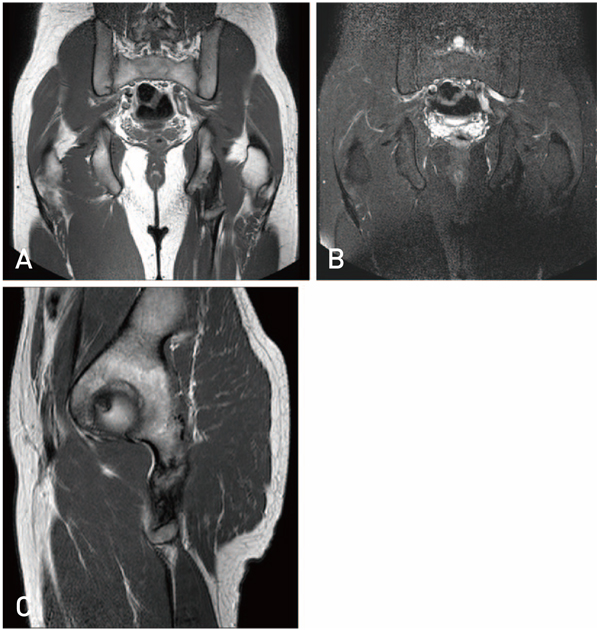Hip Pelvis.
2016 Sep;28(3):187-190. 10.5371/hp.2016.28.3.187.
Ischial Tuberosity Avulsion Stress Fracture after Short Period of Repetitive Training
- Affiliations
-
- 1Department of Orthopedic Surgery, National Police Hospital, Seoul, Korea. ysr@police.go.kr
- KMID: 2354553
- DOI: http://doi.org/10.5371/hp.2016.28.3.187
Abstract
- Fatigue fracture of the pelvis is the form of fracture due to repetitive micro-stress accumulation, can be affected by a number of factors such as patient's nutritional status, biomechanics, social status and so on. Still there is no study about precise standard degree of external force that lead to stress fracture, but it may caused by compression force, traction force or complex force and others. Avulsion stress to ischial tuberosity or anterior superior iliac spine by attached muscle is known as the main factor for the avulsion fracture. This report will deal with 19 years old conscripted policeman who occurred ischial tuberosity avulsion fracture after training of 6-hour running for 5 days accompanying hip hyper-flexion motion. This reports aims to provide case study of stress fracture occurred after 5 days of exercise which is relatively short period who had no specific trauma history or pain.
Keyword
Figure
Reference
-
1. Kahanov L, Eberman LE, Games KE, Wasik M. Diagnosis, treatment, and rehabilitation of stress fractures in the lower extremity in runners. Open Access J Sports Med. 2015; 6:87–95.
Article2. Behrens SB, Deren ME, Matson A, Fadale PD, Monchik KO. Stress fractures of the pelvis and legs in athletes: a review. Sports Health. 2013; 5:165–174.
Article3. Gidwani S, Jagiello J, Bircher M. Avulsion fracture of the ischial tuberosity in adolescents--an easily missed diagnosis. BMJ. 2004; 329:99–100.
Article4. McKinney BI, Nelson C, Carrion W. Apophyseal avulsion fractures of the hip and pelvis. Orthopedics. 2009; 32:42.
Article5. Lenhart R, Thelen D, Heiderscheit B. Hip muscle loads during running at various step rates. J Orthop Sports Phys Ther. 2014; 44:766–774.
Article6. Schache AG, Dorn TW, Blanch PD, Brown NA, Pandy MG. Mechanics of the human hamstring muscles during sprinting. Med Sci Sports Exerc. 2012; 44:647–658.
Article7. Rockwood CA, Green DP, Court-Brown CM, et al. Rockwood and Green's fractures in adults. 8th ed. Philadelphia: Lippincott Williams & Wilkins;2015. p. 651–653.8. Lapp JM. Pelvic stress fracture: assessment and risk factors. J Manipulative Physiol Ther. 2000; 23:52–55.
Article
- Full Text Links
- Actions
-
Cited
- CITED
-
- Close
- Share
- Similar articles
-
- Sequela of Untreated Avulsion Fracutre of Ischial Tuberosity: Report of Two Cases
- Apophyseal Avulsion Fracture of Ischial Tuberosity during Soccer: A Case Report and Literature Review
- Avulsion Fracture of the Calcaneal Tuberosity: 2 Cases Report
- Isolated Avulsion Fracture of the Lesser Tuberosity of the Humerus: A Case Report
- Tibial Tuberosity Avulsion Fracture Combined with Meniscal Tear: A Case Report




